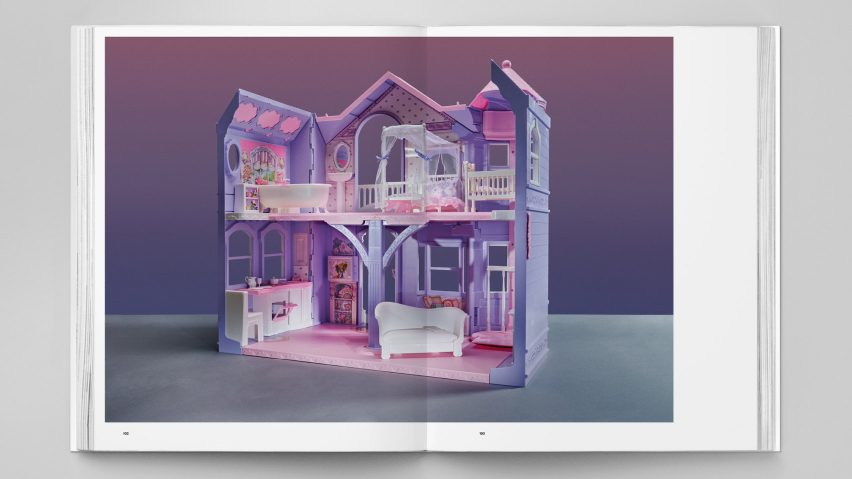
Six Barbie Dreamhouses that chart the evolution of the American home
Toymaker Mattel and architecture magazine Pin-Up have released a book celebrating Barbie's Dreamhouse to mark its 60th anniversary. Here, the editors pick six emblematic examples that show how the dollhouse has evolved.
The monograph, which the publishers say is "the first architectural survey of the world's best-selling dollhouse", features glossy images of the houses captured by fashion photographer Evelyn Pustka, alongside detailed architectural drawings.
Pin-Up magazine founder Felix Burrichter co-edited the book together with journalist Whitney Mallett, bringing together quotes and essays from industry figures including architectural historian Beatriz Colomina, critic Ian Volner and designer Kelly Wearstler.
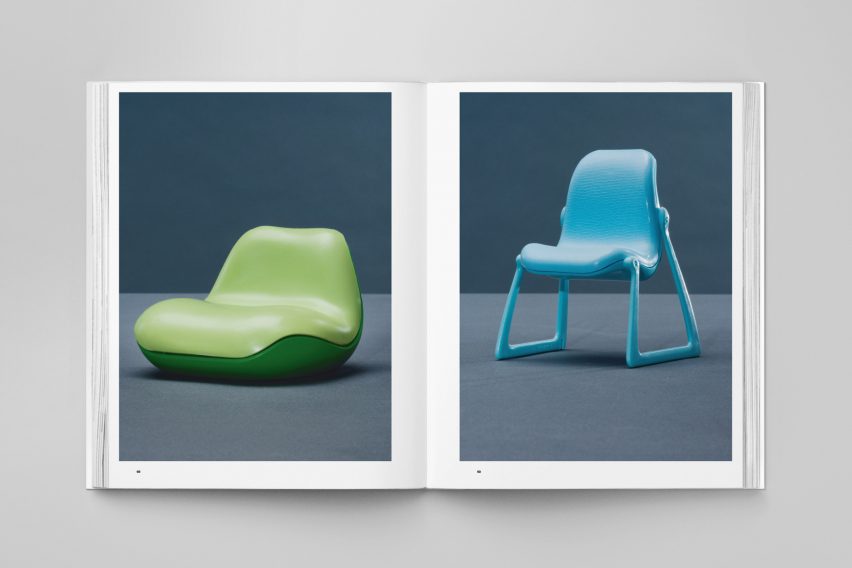
"There have been so many books and entire PhDs on Barbie, but never really on her many houses and her furniture," Burrichter told Dezeen.
"So we thought it would be a good idea to make one and treat it as a serious subject, in the same way that Barbie has been treated as a serious subject over the years."
Barbie and the "performing of domesticity'
The homes themselves range from contemporary influencer houses all the way back to the mid-century bungalow of the 60s.
In this way, the book establishes the Dreamhouse as an early example of homes turning from private domains into a means of expressing and performing our personality for others – alongside the Eames house, the Playboy apartments and Jackie Kennedy's televised tour of the White House in 1962.
"We think today that we're always performing your domesticity as a way to say who you are," Mallett explained. "But Barbie was already doing it in 1962."
Up until the late 1970s, both Barbie's homes and pop culture in general were very much in line with the architectural discourse of the time.
"You have Mies van der Rohe in Playboy and Herman Miller being represented in the 1962 Dreamhouse," Mallett said.
But from the 80s onwards, the architectural establishment went "super niche" and began to distance itself from mass culture, the duo argue.
"By 2000, there is almost a complete disconnect between architecture academia and what is actually being built and where people live," Burrichter said.
"In schools, they're teaching blob houses. And meanwhile, in most of America, you have rows of McMansions or suburban houses."
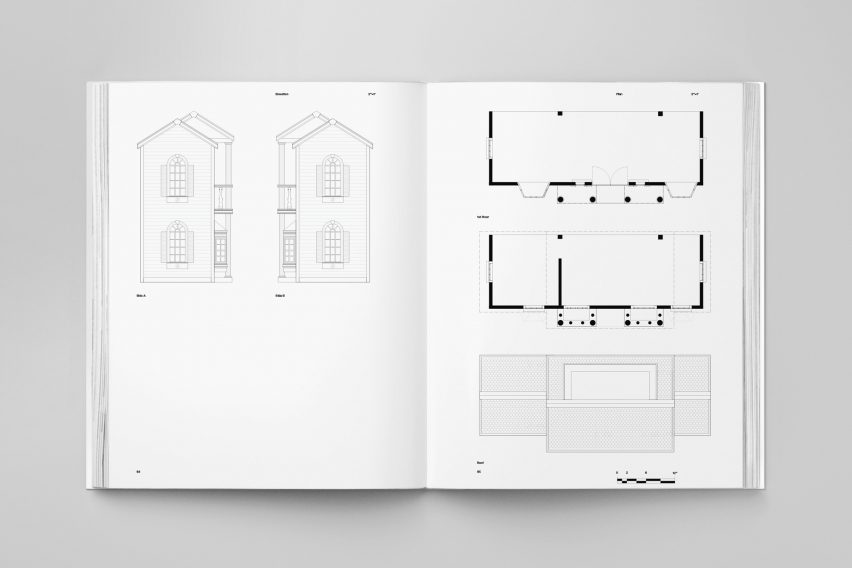
"With the construction booms of the 80s, early 90s and 2000s, more and more homes were designed by builders instead of architects," Mallett added.
"So there's this bifurcation where the Dreamhouse is more in conversation with McMansions, which might reference postmodern architecture but lose the kind of ironic quoting involved in using Doric columns."
Read on for six of Barbie's Dreamhouses from 1962 to 2021 and how they reflected the styles and domestic ideals of the time:
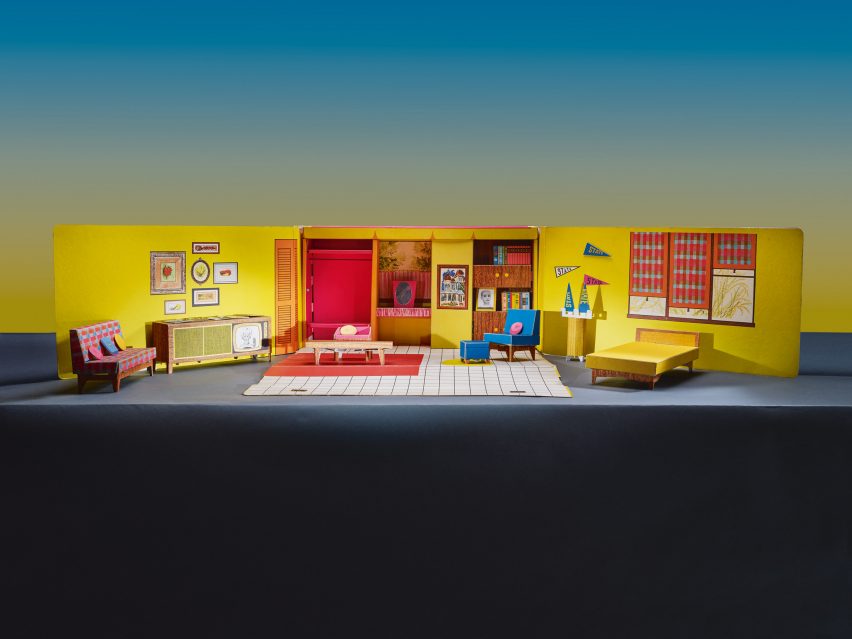
1962 – Barbie's first home
The first-ever Dreamhouse was released in 1962 – more than a decade before women were allowed to attend an Ivy League university, open a bank account or take out a mortgage without a male co-sign in the US.
Nevertheless, the foldable cardboard ranch house was designed as a bachelorette pad for Barbie, with college paraphernalia and clean-lined mid-century furnishings in the vein of the Eamses and Florence Knoll but – most importantly – without a kitchen.
"It really was ahead of its time," Mallett said. "The world they built for her was feminist, it was progressive, it was about independence."
"It's a fantasy. For better or for worse, that's what these houses do."
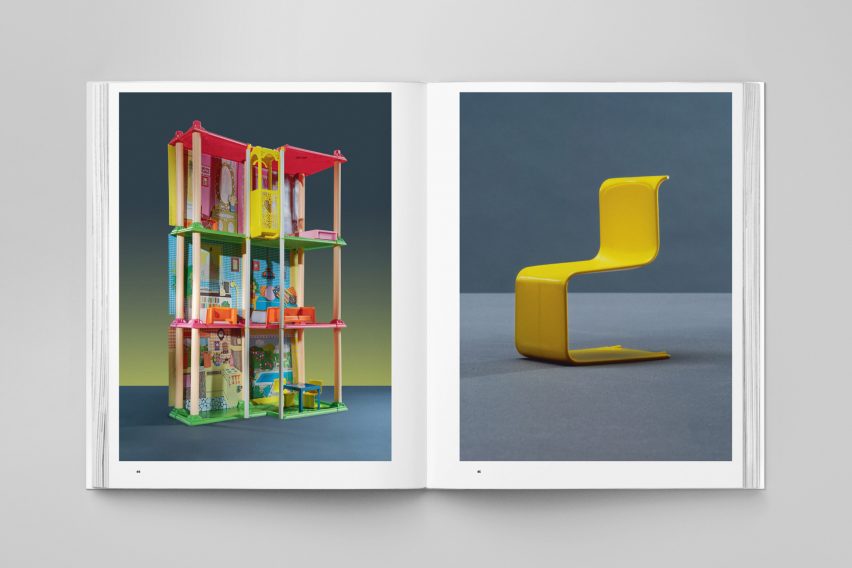
1974 – Barbie's bohemian townhouse
Spread across three storeys and six rooms, this townhouse combines modern slab-and-column architecture reminiscent of Le Corbusier's Maison Dom-ino with homier items such as potted plants and stained-glass Tiffany lamps, which are outlined on its cardboard backdrop.
This decor nods to the so-called "fern bars" of the time that incorporated cosy design touches in the hopes of enticing a new generation of single women into what were traditionally male establishments.
Reflecting the rise of plastic furnishings, the kitchen is outfitted with canary yellow chairs that fuse the shape of Marcel Breuer's cantilevered Cesca with the sensibility of the monobloc Panton Chair.
"With the 70s houses, what I find interesting is that the furniture was really elaborate," Burrichter said. "They were making design statements."
"Whereas in later years, they veer more towards just being functional, vague references to contemporary styles."
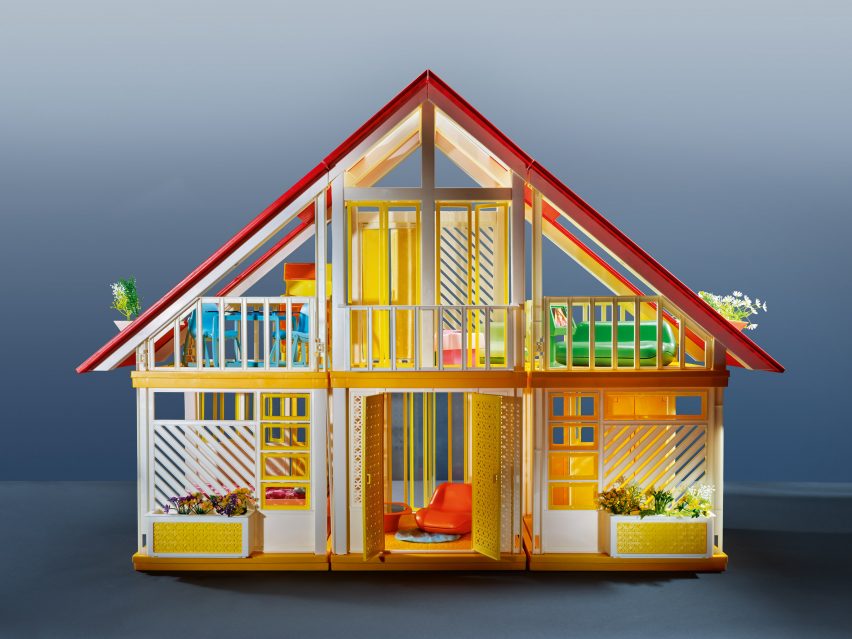
1979 – Barbie's A-frame cabin
One of the first to be made entirely from plastic, this Dreamhouse features a pitched, tiled roof that pays homage to the A-frame craze that swept the US in the late 60s and 70s.
"The A-frame, at that point, had gone from being a sort of American vernacular used for little mountain retreats to becoming an expression of a certain type of living," Burrichter said.
"You see celebrities like Frank Sinatra having an A-frame for their weekend house," Mallett added. "There's a certain utopian ideal that's being told through those shapes."
At the same time, the building consists of three separate parts that can be rearranged, echoing the way that postmodern architects of the time were deconstructing vernacular housing typologies.
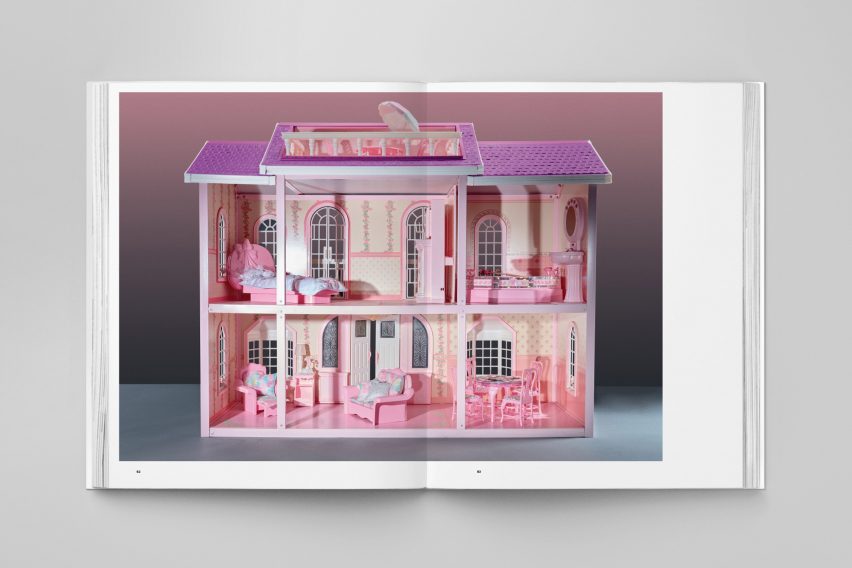
1990 – Barbie's Magical Mansion
The 90s saw the switch to an almost exclusively pink Dreamhouse, which is mirrored in the floral and pastel interiors of the time, courtesy of brands including Laura Ashley and Ralph Lauren Home.
But the real reason for Barbie's pinkification is related to marketing, Burrichter said.
"When you see the A-frame from the early 80s, there were reds and greens and yellows," Burrichter said. "But the whole palette kind of changed."
"The decision to use more pink and to emphasise it started in the late 70s because there were so many Barbie copycats. And in an effort to really distinguish Barbie in the marketplace, they decided to brand everything in pink."
The battery-powered Magical Mansion effectively functions as a "bourgeois homemaker kit", Burrichter says, complete with all the cutlery and crockery as well as a ringing telephone and light-up fireplace.
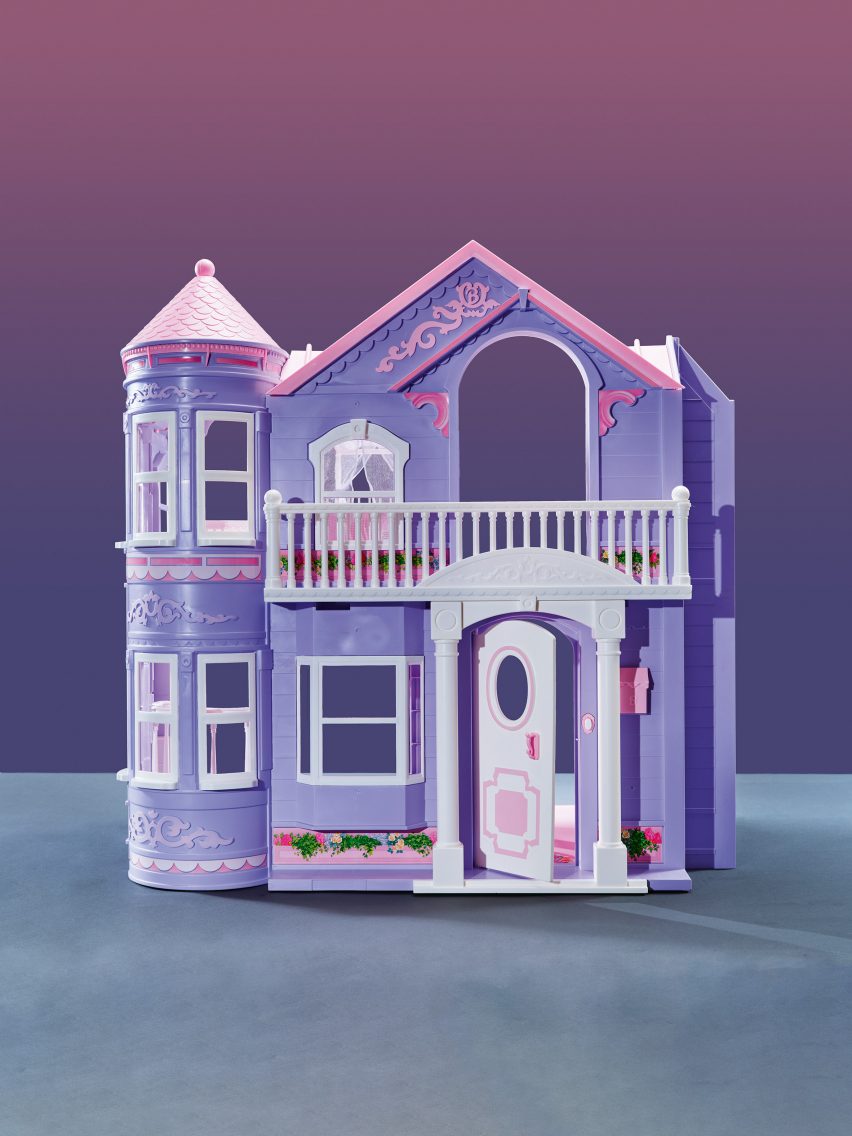
2000 – Barbie's castle
This turn-of-the-century home is a mishmash of modern and traditional elements, featuring a turret, portico and a frilly four-poster bed alongside a tiny flat-screen TV.
"I think it has to do with the anxiety of that moment," Mallett said. "With Y2K, there was a fear of technology and new things, so people returned to what felt safe."
"You start seeing turrets and castle vernacular in pop culture like MTV Cribs," she continued.
"With the suburban McMansion developments of the 90s and early 2000s, you have those things becoming a new type of status symbol again."
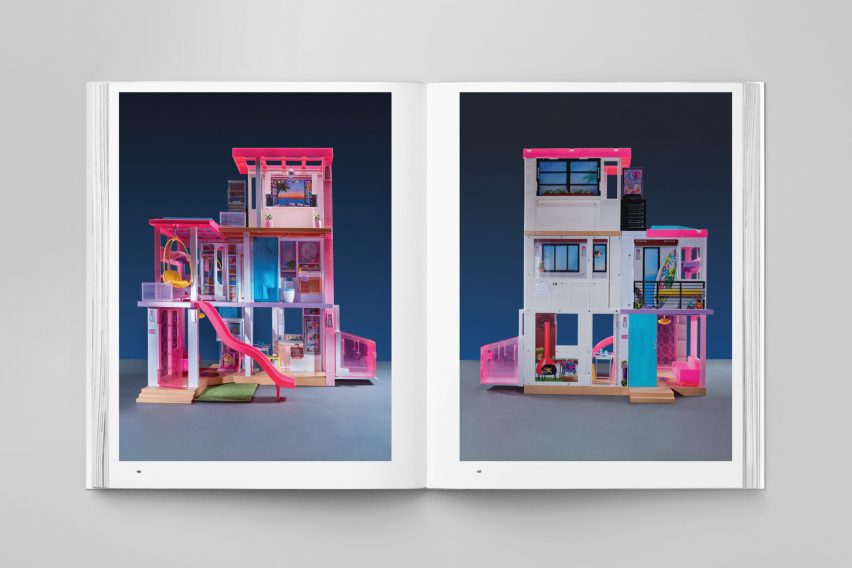
2021 – Barbie's content house
The most recent Dreamhouse is loosely modelled on the content houses of Los Angeles, where influencers band together to create content for social media.
Mimicking these sleek luxury condos, the house is the first to reprise the flat roof, with other touches including a slide, a moveable pool and a barbecue that turns into a dessert buffet.
"It has that aesthetic of a universally usable space where you can host a lot of friends or produce content," Burrichter said. "There's a real emphasis on fun, and if you see what is being produced in architecture now, I think there are a lot of parallels."
The home is also the first Dreamhouse designed to be wheelchair accessible, reflecting the growing focus on making both design and architecture more inclusive and accessible.
The photography is by Evelyn Pustka.